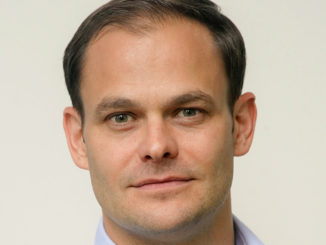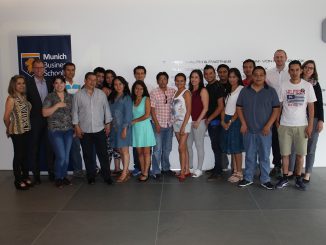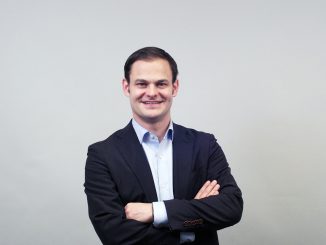
It was an interview that caused a stir: Oliver Samwer, CEO of Rocket Internet AG and one of the three Samwer brothers, who control a multitude of shareholdings in the Internet with their fund “Global Founders”, told Frontal 21, a German TV program, that he sees himself in the historical lineage with the Grundig, Siemens and Miele families.
Since the IPO of Rocket Internet and Zalando, it has at least become financial reality.
This statement, however, made many smile condescendingly.
Opinions may differ on the innovation model of the Samwer brothers and their enterprises that have emerged from the incubator machine Rocket Internet AG. Many other authors have already commented on this subject ad infinitum.
A new perspective arises for those trying to get to the bottom of the statement by asking themselves if and how the Samwer brothers, Rocket Internet and “Global Founders” can be aligned with German entrepreneurial families. And if so, perhaps the business approach of the three brothers can teach some established family firms a lesson.
Currently, the whole world speaks about the success model of German medium-size companies. This refers to family enterprises which are handed down from generation to generation, companies that are rooted in a courageous pioneering spirit, which – thanks to German precision, quality and technological progress – are globally successful. In many respects, traditional entrepreneurial families have already separated themselves from the companies they have founded, or have advanced into further markets and business models. In the best entrepreneurial families, each new generation manages to open to new technologies and to develop new arenas for their company’s portfolio, thus growing the wealth parallel to the growing number of family members. To keep the company growing fastly and prospering after the “rocket start” is the major challenge for the upcoming successors of German entrepreneurial families.
Looking at the historical roots of successful entrepreneurial families, it turns out that it was very often a constellation of brothers that brought forth completely new family firms and established them in the champion’s league of entrepreneurial families in a very short amount of time. The examples of the founding brothers Albrecht (Aldi), or the Dassler brothers (Adidas on the one hand and Puma on the other), or the Strüngman brothers (Hexal), Chandler brothers (Legatum and Chandler Crop in Asia), or even international entrepreneurial families like the Rothschilds, that emerged from father and sons, indicate that brothers who work together and set up one or even more companies can very well become the roots of successful family firms.
But which qualities can we identify in the Samwer brothers’ business concept and what can succeeding generations of entrepreneurial families learn from them?
Altogether, we can determine five categories:
1. Vision
The case Samwer: All interaction between the three Samwer brothers proves an absolute clarity with regard to their common vision. A) They want to rise to become the leading global player on the internet, outside of the USA and China, and B) in doing so, they want to become rich. Despite extreme success in business, the privacy of the family is protected.
Current challenges of entrepreneurial families: With increasing family size and succession of the next generation, many traditional entrepreneurial families find it difficult to work out such an integrated, common and clear vision. However, without such basic clarity about the reasons and motives for which a family runs one or more companies, and about the goals, which can but do not necessarily have to be financial, all later discussions and actions will become blurry and thus give room for misunderstandings and for conflict. In some cases the concerted external action is dissolved and replaced byarguments being carried out openly. Especially if the organization lacks coordination and ideas, and opinions within the families are inconsistent.
Lessons Learned: A precise vision which is clearly understood throughout the entire family and implemented by each single member according to the best of his or her abilities, is the indispensable cornerstone of any successful entrepreneurial activity. A concerted external action will give additional strength. Entrepreneurial families should therefore ask themselves, if they can pinpoint their common future goals with the same precision as they did for the “rocket mission”.
2. Coordination
The case Samwer: All activities of the Samwer brothers reveal stringent internal coordination and cohesive and concerted external action. Each of the brothers contributes to the overall constellation precisely where his talents and strengths produce the greatest added value. Oliver Samwer, for example, is the CEO of the Rocket Internet group and Marc Samwer is particularly involved in the operative control of Zalando. Moreover, it is obvious that none of the brothers seeks to appear in the press as often as possible, or to be more important than the other. The only thing that matters is the common vision and the stringent and well-organized path to that vision.
Current challenges of entrepreneurial families: Over the time, it may happen that the common vision is overshadowed by individual family members striving for social status and public recognition. Very often, this is a cause for conflicts in the respective families.
Lessons Learned: The constant coordination and cohesive and concerted external action of the family supports the execution of the precise vision (point 1). This is the main task of the family members. Without these two points, the vision only remains a “nice idea”. Oliver Samwer explained this in his interview with Frontal 21: entrepreneurship can be compared with the difference between “waking up and getting up. You wake up, full of ideas and [visions], […] but getting up is different […] because it is much harder”.
3. Disruption and breaking the rules
The case Samwer: With their companies, the brothers have become specialists in overturning taken-for-granted rules of entire industries and replacing them with new business models – often even with simpler and less technological solutions than before. With Zalando, for example, they replaced the conventional shoe and clothing stores, up to then characterized by large retail surfaces in big cities, sellers at the cashier and seasonal sales at the end of summer or winter season. In addition, they look for growth markets, where they can quickly implement their business models and where they can quickly become market leader. That is why today, they are present in Southeast Asia, Africa or Latin America.
Current challenges of entrepreneurial families: Traditional entrepreneur families have also often begun like this: They looked for markets that were not yet detected, replaced the rules by new thoughts and business models, were keenly committed to understanding new business models quickly and, if possible, use them for themselves with their own resources. However, keeping up this routine has turned out to be one of the most difficult challenges to an entrepreneur family. Because of the growing wealth, better conditions for growing up, and the numerous offers of external service providers and asset management, a strong motivation of today’s and future generations is required to meet business challenges continuously and turnthem into operative and executive action
Lessons Learned: Traditional entrepreneur families may learn from the Samwer brothers that this very routine of constant development should be the heart and center of all business, and that only constantly challenging what is taken for granted – including one’s own position and rules – plus launching into new markets and technological fields will, at least to some extent, ensure long-term survival. It turned out that more technology and complexity are not always the keys to success. Instead, creating new business models even with less technology and simpler solutions can often be the right approach. Technical complexity alone can not secure a world leading position. It rather is a result of shaping new business models and breaking with old-fashioned thought patterns.
4. Diversified portfolio
The case Samwer: A look at the portfolio of the Samwer brothers shows that investments are made and companies are set up across multiple sectors into the most diversified phases of the industrial value added chain. The dots of these shareholdings, however, are connected by one common theme: Revolution of many industries by the Internet. The Samwer brothers have built a widely branched portfolio around their core competence: swiftly setting up new disruptive business models. In this portfolio, the individual companies are always strategically connected to their other shareholdings. Thus, they have gained a position where they can represent and dominate entire industrial value added chains.
Current challenges of entrepreneurial families: It is often hard for traditional entrepreneurial families not to place their history but their real core competencies in the focus of their considerations, to benchmark with new markets and technological fields, and to adapt their competencies, if necessary.. Remaining in formerly successful business fields too long and avoiding opening up to new markets and technology cycles that are important to the company can be dangerous: it bears the risk of – due to a false sense of tradition – remaining in industries, markets and technologies that will quickly arrive at the end of their respective life cycle – especially in those fields in which young companies “beat” entrepreneurial “brick and mortar” tradition with the financial back up of investors who put their focus on economic growth and disruption.
Lessons Learned: Traditional entrepreneurial families that want to continue being successful or even expanding, should not only pay attention to the constant optimization of the traditional business concept, but also consider a diversification of the existing portfolio. This portfolio should include innovative technologies and new business models neighboring the core competencies of the company. At the same time, it should question the succession within the family, as well as it should question the succession of industrial life cycles and business models within the company – if possible, supported by an external management, for instance the board of directors or the advisory board.
5. Leadership and culture
The case Samwer: All cooperation between the Samwer brothers as owners and their externally staffed management teams is governed by absolute unanimity of interests with regard to reaching the defined goal: Becoming number one or two in those markets that are to be conquered by the relevant companies. In addition, internal coherence is based on a strong culture and a sense of belonging in pursuing the clear goal of absolutely succeeding despite all external obstacles. This became very apparent by the often quoted “Blitzkrieg e-mail”.
Current challenges of entrepreneurial families: In traditional entrepreneurial families, this type of company culture, its absolute coherence – almost an esprit de corps – was the very essence of a company’s identity and key motive for its performance. Experience has shown, however, that with every new generation and a growing distance from the company and its daily business, the distance between owners and operative managers and/or the staff often grows. Consequently, the sense of the staff working together towards one large goal and being part of a family is lost. This does not have to result in the family being always involved in the daily business routine; however a culture of cohesion and coordination has to be established ‒ between entrepreneurial family and staff as well as within the family itself.
Lessons Learned: Traditional companies can learn from the Samwer brothers, that coherence, clearly defined goals and strong commitment to entrepreneurial success can be the foundation of a company culture where all work for the common goal and toil together for the vision of the entrepreneurial family as outlined in point 1 and 2.
In a nutshell: We can summarize that the quote of Oliver Samwer counting the Samwers among Germany’s successful traditional entrepreneurial families is justified in certain aspects, e.g. regarding the strength of family firms. Although it sounds absurd at first, we could find five characteristics, which ten, fifty or hundred years ago were the key to success for German family firms (among them a team of brothers) and have contributed to building the internationally successful traditional German brands we know today.




